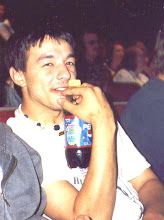Caring for kids exposed to meth
When home labs are busted, children treated
Alex Breitler
Record Staff Writer
Published Sunday, Jan 22, 2006
Law enforcement officials from across San Joaquin County are drafting new standards to ensure children of methamphetamine users are cared for following drug busts in their own homes.
The guidelines will include more strict decontamination of children who may have been exposed to meth labs. Meth is a powerful stimulant cooked with more than a dozen chemicals commonly found in pesticides, paint thinner, cold medicine and fingernail polish remover, among other household items. Many of the chemicals are flammable and produce toxic vapors that cause respiratory failure, burns or birth defects.
"Cops aren't usually chemists," said Manteca police Sgt. Louis Clark, whose department put the plan into action at a bust on Jan. 10. "Until recently, we didn't really comprehend how dangerous some of these chemicals are."
Meth labs in San Joaquin County and throughout the state are declining as more of the illegal drug is produced across the border in Mexico, according to the U.S. Drug Enforcement Administration. But some labs are still here, police say, hidden anywhere from the most dilapidated shacks to the most extravagant homes.
The guidelines are intended to help the county comply with new state and federal laws that require greater collaboration between agencies.
Manteca's recent bust took place at a Locust Avenue house less than a quarter-mile from a school.
While detectives investigated the lab, a woman and her three children, including an infant, were either hosed down or washed with baby wipes. A next-door neighbor allowed officers to set up a decontamination tent in her driveway to give the family some privacy. Neighbors also provided warm water to wash the baby.
The mother, 31-year-old Marcela Martinez, was arrested on suspicion of child endangerment. Two men also were taken into custody.
In the past, officials were given some discretion on whom to turn the hose, Clark said. Under the new standard, everyone who lives at a house with a meth lab is washed - including children.
The water removes chemical residue from their bodies and keeps it from spreading to others, officials say. But it can't wash away the damage that's already been done by ingesting the drug or inhaling its toxic fumes.
Bill Ruzzamenti, director of the federally funded Central Valley High Intensity Drug Trafficking Area, said brain scans for people who have used or been exposed to meth over time are similar to those with progressive Alzheimer's disease. Parts of the brain simply stop working.
Washing the children won't completely protect them, said Ruzzamenti, whose Fresno-based agency investigates meth cases from Sacramento to Kern counties.
"We've had children as young as 6 months old test positive for meth in their blood," he said. "You know there has to be some residual effect for that down the road."
This isn't the first time decontamination standards have been tightened, he added.
Drug agents once allowed children to take a stuffed animal or blanket with them for comfort when they were pulled from homes where their parents or guardians were arrested. Subsequent studies showed chemicals might be clinging to those possessions; now children must leave them behind.
"It's terrible," Ruzzamenti said. "Nobody likes to do that. It's certainly not the kids' fault."
To help children after they're hosed down, Manteca police last week also added decontamination kits to about a half-dozen patrol cars. The kits, prepared especially for children rescued from meth labs, contain a variety of sizes of clothes, diapers and formula for the hours immediately following a bust.
Agents with the county's Child Protective Services are sent to meth labs somewhere in the county about once a month, said the agency's deputy director, David Erb.
Children often wind up in a county shelter until their custody cases wind through the courts, Erb said.
San Joaquin County's Child Protective Services fields about 700 reports each month of suspected child abuse and neglect. One-fifth of those are drug-related, with meth being the primary drug.
"It's a huge problem, no question about it," said Erb.
It's important to decontaminate the children, he said. However, police and firefighters should carefully check things like water pressure and temperature to lessen the trauma, he said.
Officers are as careful as possible, said Clark of the Manteca Police Department.
"I don't think the children really comprehend what is going on," Clark said. "All they know is a bunch of strangers are throwing water on them."
More than 760 meth labs were busted in 2004 in California, according to the federal government. At least 28 of those labs were reported in San Joaquin County.
Manteca Fire Chief George Quaresma met with police Wednesday to talk about the previous week's bust and how things went.
"It's precautionary," he said regarding the new measures. "If there is any kind of hazardous chemical, you want to leave it there rather than take it with you."
Contact reporter Alex Breitler at (209) 239-6606 or abreitler@recordnet.com


0 Comments:
Post a Comment
Subscribe to Post Comments [Atom]
<< Home